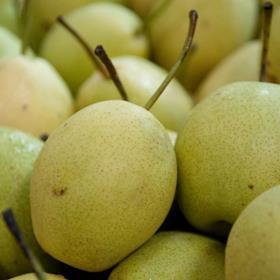
Scientists in New Zealand say they have taken a major step closer to being able to develop varieties of pear with new characteristics.
According to Plant & Food Research, which analysed the genome sequence of the pear and compared it to the sequence for apples, there are a number of 'surprising differences' between the two types of topfruit at DNA level.
The European pear genome, which was sequenced by scientists at Plant & Food Research and the Istituto Agrario di San Michele all’Adige (IASMA) in Italy, has 600m base pairs of DNA encoding around 51,000 genes on 17 chromosomes.
By comparison, the apple has 25 per cent more DNA – 750m base pairs – with 57,000 genes on the same number of chromosomes.
As project leader Dr David Chagné explained, many of the differences between the two fruit correspond to areas of the genome that are responsible for switching genes on or off.
'We hope that by sequencing the genome of the European pear, with its melting flesh and wonderful flavours, and comparing it with the genome sequence of apple and Asian pears, which tend to be crisper, we will be able to identify how flesh texture in these fruits is controlled,' said Chagné.
'Ultimately, this will allow us to develop tools to speed up the breeding of new varieties of pear with novel combinations of texture and flavours.'
The team behind the research said it had been most surprised by the number of genes found to control texture.
The scientists had expected the number to be higher in pears because of the way its flesh tends to dissolve in the mouth, but in fact it was the same as for apples.
However, the research did show that one family of genes in pears, known as expansins, was significantly more active.
Rapid response
Dr Sue Gardiner, who heads up Plant & Food Research’s breeding rechnologies group, believes the project is one of the fastest genome sequencing projects ever to be undertaken, taking only two years from inception to completion.
'The hard work and strong collaboration between all the scientists involved, both in Italy and New Zealand, has meant the sequence has taken much less time to deliver than other genome sequencing projects,” she observed.
Apples and pears are believed to have evolved from a single shared ancestor around 35-50m years ago, about 20m years after that fruit diverged from others in the Rosaceae family, such as strawberries and peaches.
The change of course was apparently caused by a duplication of the genome and corresponds to an era of major evolutionary activity.
'This divergence is thought to be a genetic survival response to an event that caused the extinction of many species, including the dinosaurs,' Gardiner added.
Dr Gardiner is due to present the findings of the research at a conference on rosaceous genomics at IASMA in Trento, Italy, this week.






No comments yet